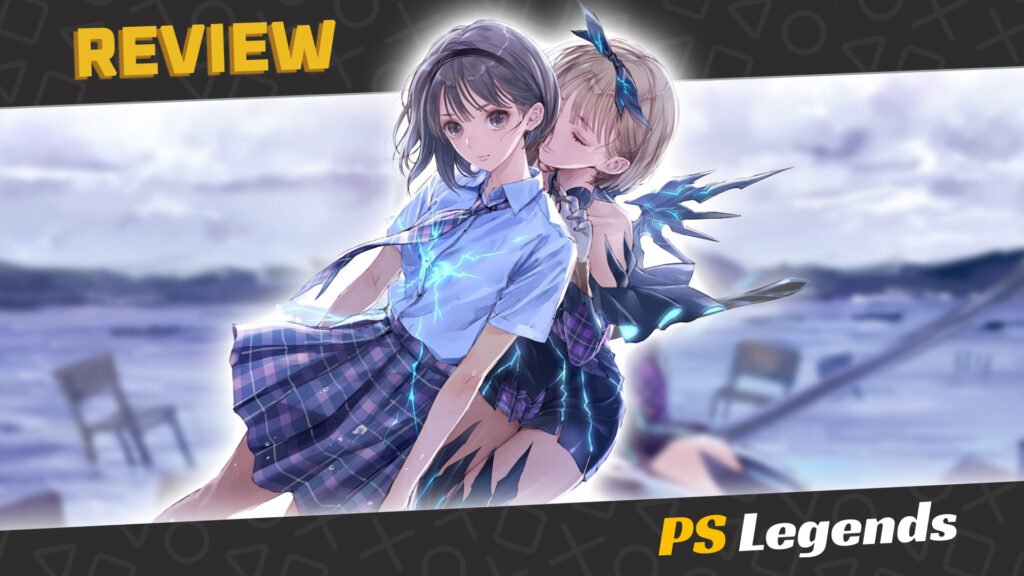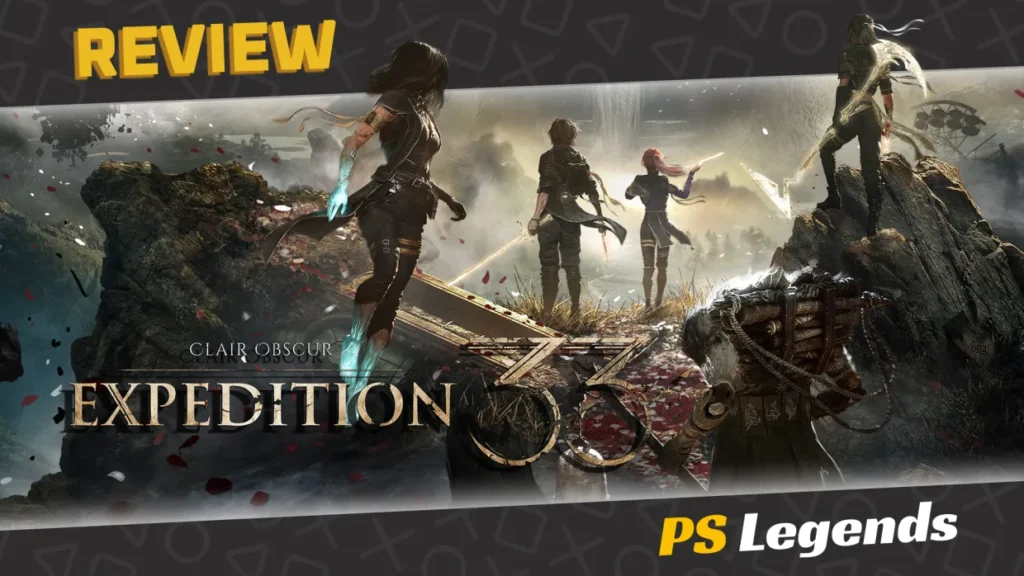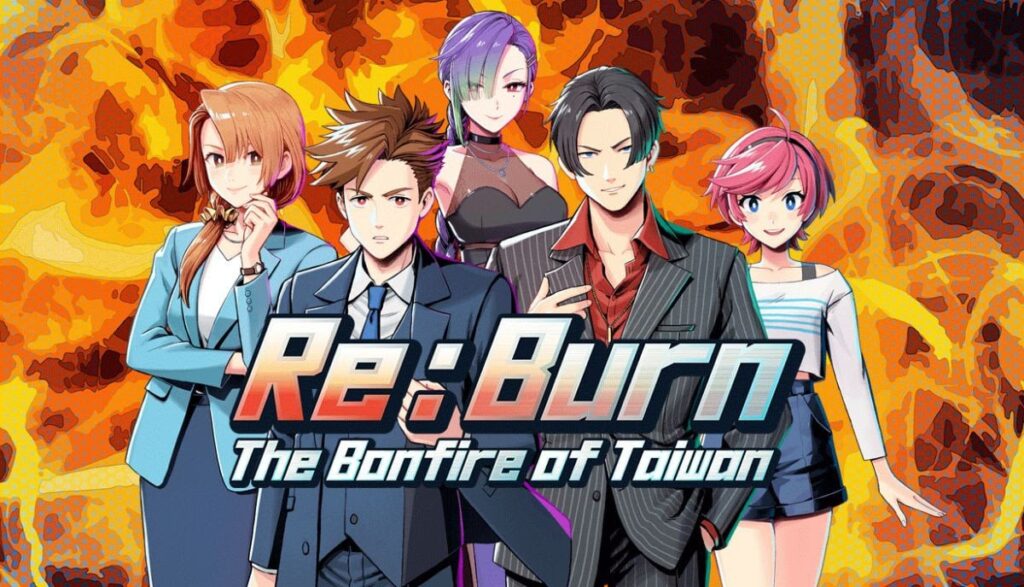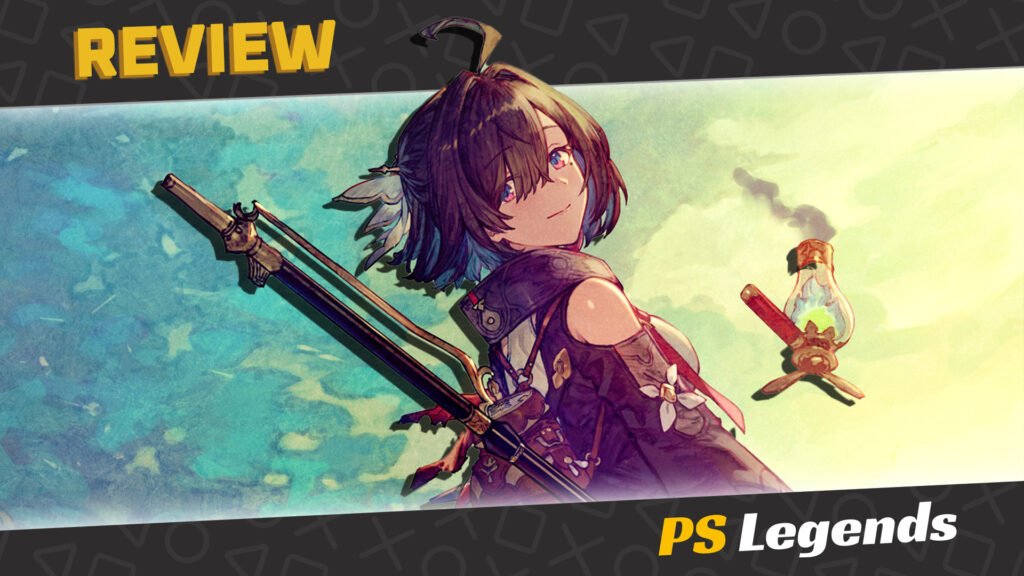It’s an unfortunate fact that certain topics are capable of bringing out not only the best, but the very worst in people. The same can be said of certain games too, as I’ve recently learned that merely uttering the name ‘Blue Reflection’ in online forums causes an unpleasant entourage of extremists to emerge from the shadows, who rather than express their distaste for the game, prefer to slander those who choose to play it, particularly those who enjoy its themes, in what is a tragic case of shooting the messenger.
My review of the original Blue Reflection is one I’m immensely proud of and stand by wholeheartedly. It’s here to stay. Yet mentioning the game in Facebook gaming groups caused so much hostility that I no longer contribute to particular groups following the unregulated backlash. You’d think that would be the end of the matter, but now we have to address the unlikely situation of what happens when a controversial game spawns an unexpected sequel.

Introduction
The original Blue Reflection could go one of three ways for most people, either you loved it more than oxygen, you hate its themes with a passion, or you’ve never heard of it. Still, it was something of a genre-defining moment, taking a classic turn-based JRPG and bringing back the 80s/90s magical girl anime genre with some all-girl high school dating mechanics too. It just worked, and when combined with such a heartwarming story, I make no exaggeration when I say, in my humble opinion, Blue Reflection is one of the greatest games of the PS4 generation.
Blue Reflection was a self-contained and complete story that didn’t really need a sequel, so I was particularly surprised when after several years of silence, I learned that multiple games were being developed along with an anime series to expand the franchise. Then I heard the news that elements from Gust’s other franchises were being implemented into sequel Blue Reflection: Second Light in order to appeal to a larger audience. This worried me, as I’m really not a fan of Atelier’s overcomplicated crafting. Don’t fix what isn’t broken.

Story
Rather than gently introducing its characters like the original Blue Reflection, Second Light begins more like Fairy Tail by thrusting you into a party of combatants within a strange world. Fortunately, this is just to tease you a little and teach you the ropes as your party comes together soon after to discuss their origins, with mildly ambitious protagonist Ao attending high school one summer in order to give herself an educational uplift, only to find that her school now exists trapped within an isolated pocket-dimension. Ao teams up with a handful of amnesiac students also present to find a way back home.
There’s a strange app on Ao’s phone which contains a rather indecisive AI, who one minute advises Ao to sit tight and wait for help to arrive, before changing its mind because help really isn’t coming. The girls will have to find their own way out of this paranormal nightmare. There’s certainly a mystery to be uncovered, however it takes a ridiculous amount of time for the story to actually get started. The game is split over eleven chapters, and seven of them are essentially character introduction arcs. It takes around 20 hours for the game to actually get going, and like YS VIII: Lacrimosa of Dana, that’s a hell of a lot to ask.

Gameplay
While the original Blue Reflection would see you switch between school-life and a fantasy world via a portal in a sort of drop-in-drop-out system reminiscent of the Persona games (albeit so much simpler in its execution) Second Light’s high-school is unfortunately barren and, as such, rather uninteresting this time around. Venturing outside of the grounds allows you to explore the ever-growing number of Heartscapes; dungeons composed of locations from lost memories which, when explored, allow a particular party member to recover her lost memories.
If perhaps the rather empty setting was the only setback in this sequel then I’d be happy to overlook it and move on, however I’m afraid the flaws kept coming. Second Light features character skill development from interactions with other girls as featured in the original game whilst also needlessly muddling in old-school RPG levelling up.
It also brings back the facility development from Nelke and the Legendary Alchemists, and then there’s my biggest pet-hate of them all: the crafting. Yes, borrowing from the Atelier series, Second Light relies heavily on item crafting, something that was always an excessive time-sink in the Atelier games.
With so many additional features now, Second Light is already missing that simple interface which made the original such a joy to pick up and play. Everything is so much harder to achieve now, with the crafting being pretty much mandatory to unlock the skills to survive the more challenging fights since levelling up alone is never quite enough.
Then you have to contend with mandatory stealth sections to avoid combat which feels massively out of place in a JRPG. The combat itself also borrows heavily from the active-time system used in Atelier Ryza to limit your control over your party and rush your command inputs while making you wait at least two turns to transform into ‘Reflector’ mode; the powered-up form which came instantly in the first game.
Second Light’s combat does at least look dynamic but can be rather sluggish in execution. You go into battle with three characters, with others offering background support. Each character has a different set of skills and inputs. You can adjust your party composition and tackle each threat differently. Once a character’s portrait moves to the end of the action bar, you can use an ability to attack the enemy. Enemies also share this bar and will attack you once they reach the end too.

Dealing fatal damage before your enemy is your ideal goal and there are plenty of ways to do this. If you knockback an enemy with an attack they are weak against, such as piercing, then they are bumped further down the timeline, delaying their turn. If you attack an enemy enough times before they activate, you can trigger a knockdown, which incapacitates them for a significant length of time.
All attacks on a knocked-down foe are critical hits, so you are encouraged to use it often. Not only do you deal more damage, but you receive less as a result. As another more tactical bonus, you can delay your attacks and unleash combos by waiting until your bar fills up more. You can risk delaying your strike so one character can tactically unleash two or three attacks in quick succession or play more aggressively and attack as soon as possible.
Talents are the only significant combat link to the original game and are gained by spending Talent Points (TP) and these can’t be acquired through combat. TP is gained by spending time with your friends back at school. This could be something as simple as completing a side-quest. You can also participate in the ‘date’ system, which allows your character to spend time with one of the supporting cast. This helps develop characters narratively but also grants a big TP boost.
Spending TP unlocks new attacks and new crafting opportunities. It’s a surprisingly in-depth crafting and construction system that applies buffs to various characters, but not being a true Atelier game means these elements feel rather out of place. Our party are a group of regular high school girls, and so suddenly acquiring the tools, knowledge, and motivation to construct elaborate furniture, equipment and even shops feel rather unrealistic.
Messing around with these systems might seem optional, and they should be, but they really aren’t. The benefits gained, both mechanically and narratively, are significant. Sure, the dates are fun, and crafting and side-quests encourage exploration when you’re out and about, but when you aren’t getting narrative sustenance from them, it all feels terribly mundane. Like Atelier, it’s also hard to tell which scenes are mandatory and which aren’t, so it’s easy to get your overall experience unfairly dragged out with filler.

Graphics/Sound
Visually, Blue Reflection: Second Light is a little all over the place. It runs at a fairly steady 30FPS no matter which system you run it on, meaning no boost options to bring it closer to 60. The game is also a fan of post-processing effects which means a hefty amount of bloom in the lighting which can provide some dizzying glare.
Character models don’t quite hit the mark as well as they did the first time around. There’s a slightly wooden animation with a few characters and the hair and eye shimmer from the previous game has been needlessly toned down. While no one expected perfect realism from an anime game, better usage of volumetric light rays comparable to the first game would be preferred.
The environments are a mixed bag. While the school home-hub is rather barren and lifeless, the Heartscape environments are out-of-this-world. Each area is a twisted Wonderland filled with bizarre architecture and unusual formations. Each location has oodles of environmental storytelling that screams creativity in a way few JRPGs do. There’s an impressive randomness to the stage designs, yet when you find a quiet corner away from enemies, there’s a strange, welcoming sense of calm and warmth.
It’s supported by a great cast of Japanese voice actors that sell the roles wonderfully. I don’t speak any Japanese myself but even I found Ao’s voice actress’ nonchalant tone particularly apt. Sadly, the soundtrack is a bit too heavy on the violins this time around and it feels just as out of place as those stealth sections. The battle theme never manages to get the adrenaline pumping and actually feels incredibly dull in what should be a colourfully anarchic dream-world.

Conclusion
With the flaws highlighted above quickly mounting up to cringe-worthy levels, I would already have sufficient grounds to turn my back on the game, however there’s still more to come. The amnesiac characters offer so little to keep the plot interesting even when they recover their memories, with the first few reveals being little more than familial duties, minor childhood bullying and career setbacks. I was really expecting more interesting drama and follow-through.
To be fair, a lot of time is dedicated to fleshing out the characters you’ll be adventuring with. Each chapter dives deep into what makes each character unique, the struggles they have endured, and they do inject tiny bits of intrigue. It’s just not enough to actually entertain. Being bullied? Show me some vigilante justice. Family ties holding you back? Show me your independence. Struggling with your identity? Show me your journey of self-discovery. You get the idea; Up the ante.
The key selling point which sets the original Blue Reflection apart from other RPGs (and also its most controversial feature) is the way it handled real-life issues for teenage girls. The cast would begin to question their relationships, such as whether they’re friends or something more, and yes, they would question their sexuality.
The partial nudity in first the game was frequent yet tastefully and authentically delivered. It was pure expressionism in its most beautiful form, expressionism which this sequel sorely lacks, even when isolated in a fantastical world. It’s not simply tamer than its predecessor, it’s disappointingly mundane. Like its amnesiac characters, Blue Reflection: Second Light really struggles to find its identity.
Joys
- A return of some much-loved characters
- Quirky level designs
Cons
- Characterisation struggles to find its footing
- Out-of-place crafting elements
- Combat spoiled by new mechanics



